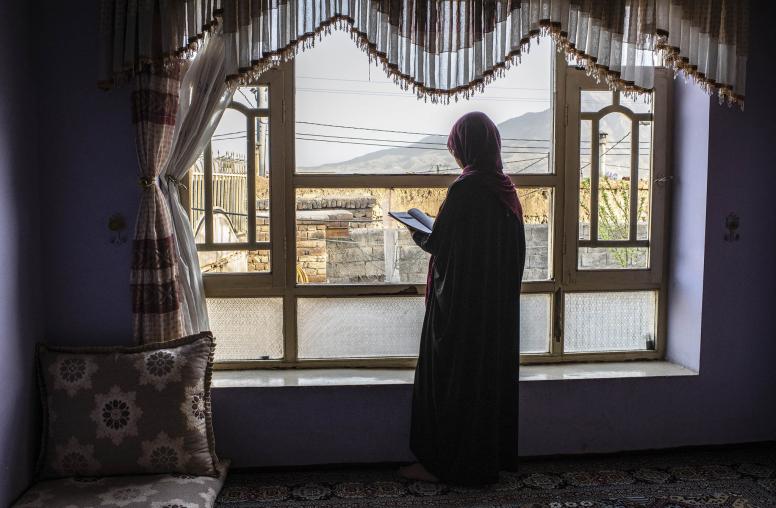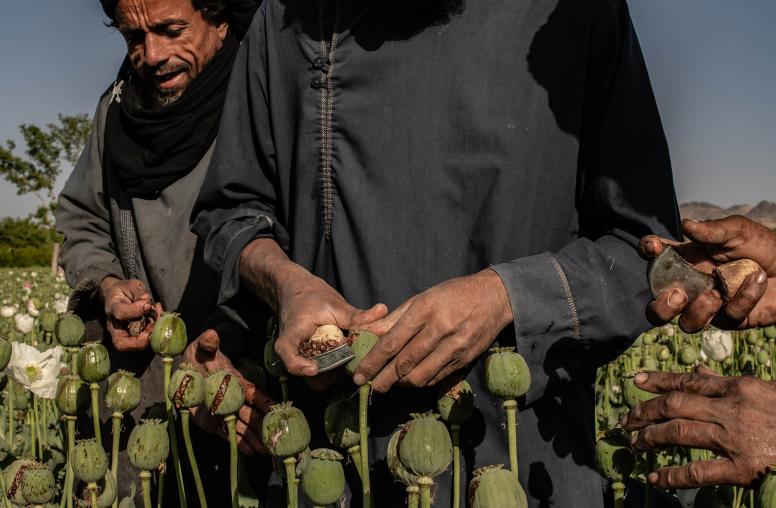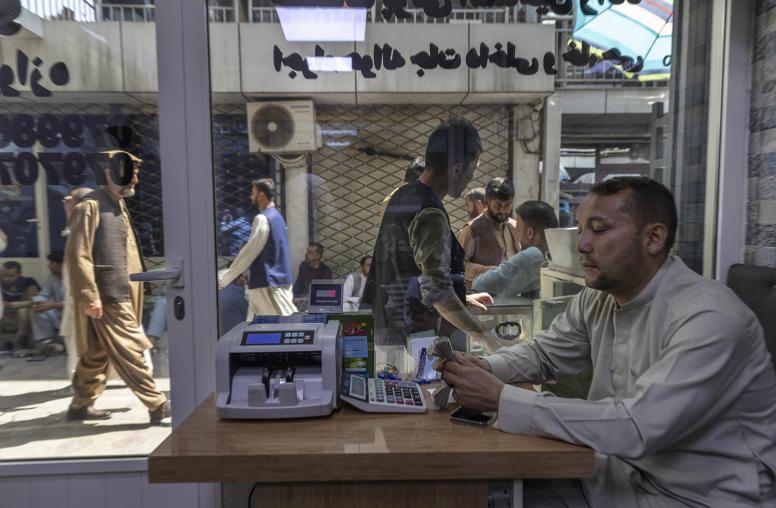To Stabilize Afghanistan, U.S. and Partners Must Commit to the Long Haul
Reformist Afghan Government Offers a Fresh Chance to Heal a Global Threat, Scholars Say
As Washington hosts Afghanistan’s new leaders this week, policy specialists and government officials have urged the United States and its allies to agree on long-term financial and security support to stabilize Afghanistan. The reformist administration of President Ashraf Ghani and his coalition partner, Chief Executive Officer Abdullah Abdullah, creates a fresh opportunity for governments and international institutions to strengthen the Afghan state and curtail the country’s decades-long warfare, said U.S., European, and Afghan participants in a conference at the U.S. Institute of Peace.

In the face of growing violence by the Taliban insurgency, Ghani and Abdullah are working to pry open a window of opportunity to negotiate a peace deal. As they do, they must improve the speed and efficiency of their government’s decision-making, said numerous participants at the conference last week, hosted by USIP, Stanford University, and the British Royal Institute for International Affairs, also known as Chatham House. The Afghan government’s failure to name more than a third of its cabinet in its first six months dramatizes the problem, several participants said.
The U.S.-led counter-terrorism and counter-insurgency intervention of nearly 14 years has included projects that dramatically improved Afghans’ health, educational opportunities and connection to the wider world, noted former Assistant Secretary of State and Ambassador to Afghanistan James Dobbins.
But “the main criterion for [judging] success or failure in an intervention is whether or not you leave behind … a country that’s at peace with itself and its neighbors. In this, of course, we have so far failed” in Afghanistan, said Dobbins. (The conference was held under rules that prevent naming most speakers to encourage frank debate. Dobbins was one of five keynote speakers whose addresses were conducted on the record.)
A Reason for Failure: We Never Really Tried
Dobbins and former U.S. government Special Advisor on Afghanistan Barnett Rubin were among speakers who said a central reason for the U.S.-led intervention’s failure to stabilize the Afghan state has been that, for years,the mission was focused instead on counter-terrorism. .
In Bosnia, where a U.S.-led intervention produced a peaceful (if still politically difficult) settlement, a critical factor was that the operation provided significant peacekeeping forces to establish order and financial help to reboot governance. Measured per capita, the U.S.-led international commitment to Afghanistan included a force only 2 percent the size of that used in Bosnia, and only about 5 percent of the financial assistance, Dobbins said.
The foreign commitment of forces and funds began to rise only after Afghanistan’s governance had been ignored long enough to let the Taliban insurgency re-erupt by 2006. At that point, much higher levels of force and funding were needed just to prevent the Afghan government’s destruction.
“Really, the intervention in Afghanistan was not a state-building intervention,” said Rubin, a career Afghan policy scholar at New York University. “It was a counter-terrorism operation.”
Even though rebuilding the Afghan state was essential to long-term U.S. and international security, any U.S. action to help do that was authorized only when it served the single, shorter-term goal of destroying al-Qaeda, Rubin said. Supporting Afghanistan’s long-term stabilization “wasn’t what it [the U.S. presence] was about,” he said. “When there was a conflict between the counterterrorist agenda and anything else, the counterterrorist agenda won out.”
The British interventions of the 1800s in Afghanistan and the Soviet occupation of the 1980s included efforts to strengthen Afghanistan’s state structures. But after those foreign governments withdrew their forces and support for their allied Afghan governments, they saw those structures fail, in part by having overreached, said another career Afghan specialist, Boston University anthropologist Thomas Barfield, who heads the American Institute of Afghan Studies.
If “Kabul feels that it can run roughshod over the countryside, it risks political instability,” Barfield said. Still, “no insurgency has ever succeeded in toppling a government in Kabul that retains an international patron.”
Lessons for Stabilizing Afghanistan Now
Lessons from the past 14 years can improve efforts now to strengthen a state structure that can govern Afghanistan effectively and bring peace, speakers in the conference said. Policy recommendations from the two days of debate included:
- Commit to real help for the long term. International projects to help Afghanistan—notably its security, economy and government capacity— must be designed and funded for the long term, rather than a year or two at a time. This will create confidence among Afghans, and domestic and foreign investors.
- Invest in civil society and education. The past 14 years has begun yielding a generation of Afghans better equipped to build an Afghanistan engaged with the 21st Century world. In the next decade, power in Afghanistan will shift from the aging generation of 1980s combatants to these younger Afghans. Continued investment in their education and skills will speed that change and, critically, sustain a greater role in it for Afghan women.
- Support talks with the Taliban. If the Ghani-Abdullah government holds peace talks that are backed by significant segments of the population and are consistent with U.S. national interests, the United States should avoid undermining them.
- Work with Iran and Pakistan. Any policy must work with all of Afghanistan’s neighbors, the most important of which are Iran and Pakistan. Policies should encourage China’s rising new interest in actively helping to stabilize Afghanistan.
- Build U.S. constituencies for Afghanistan. The American public will support policies that clearly help create a moderate Afghanistan capable of avoiding a collapse into new chaos that could breed threats to the United States. Americans also will support sustaining the gains for Afghan women and girls. This basic support can be channeled politically by creating a bi-partisan Congressional Caucus for Afghanistan.
- Promote accountability, but non-punitively. Current U.S. accountability systems for Afghan assistance and projects seem designed to punish poor performers rather than improve institutions that deliver aid. This creates incentives within U.S. structures to exaggerate success and hide failures, and oversight of Afghan assistance should be reformed.



